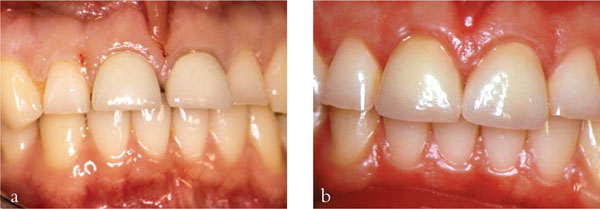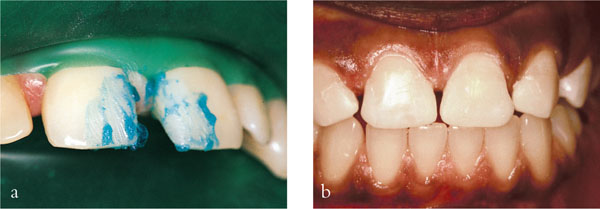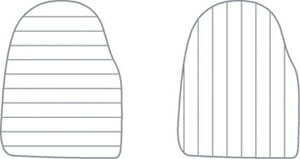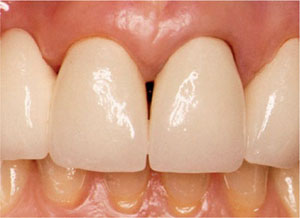Chapter 1
Smile Dimensions
Aim
To practise successful aesthetic dentistry it is important to be familiar with the essential components of an “ideal” smile – remembering of course that the “ideal” smile is a concept around which all patient treatment is based and that every patient requires an individual approach. The aim of this chapter is to acquaint practitioners with the dimensions and components of an “ideal” smile.
Outcome
On reading this chapter practitioners will be able to assess the shape and inter-relationship of crowns and restorations within the framework of a patient’s individual smile.
Introduction
Aesthetics can be viewed at two levels – the conversational and tooth levels. The conversational level considers the arrangement of teeth within the framework of a face and an individual’s smile. The tooth level is the consideration of everything that makes a tooth look like a tooth. It is important that teeth should look like teeth, but equally it is important that teeth are appropriately framed. To do this effectively a practitioner must be familiar with the dimensions of a smile, to include consideration of the following:
-
tooth size
-
the golden proportion
-
gingival position
-
black triangles
-
lip line
-
masking gingival tissues
-
moral issues.
Tooth Size
On average, the width of an upper incisor tooth is 75% of its length and where this is not the case the result is generally unaesthetic (Fig 1-1). The perception of tooth shape, however, is very personal. For instance, someone with narrow teeth and diastemas might be quite content with their appearance. But if the patient found the appearance unacceptable and new crowns were planned for the upper incisors, it may be worthwhile to consider using this rule (width based on 75% of length) to calculate tooth width. Before any changes to width and length are embarked upon, it is essential that a diagnostic wax-up is used to assess the proposed changes to a patient’s appearance. If necessary, directly placed resin composites can be used either for the short or medium term to assess the final appearance of the teeth before proceeding to the definitive treatment (Fig 1-2). The aesthetics of present-day resin composite often make the definitive stage of treatment unnecessary.

Fig 1-1 (a) Unaesthetic crowns where the width and length of the crowns are equal. (b) Replacement crown of appropriate dimensions.

Fig 1-2 (a) Etch placed to reduce a diastema with resin composite in a young patient. (b) Post-treatment reduced diastema.
The width-to-length ratio influences the judgement to close diastemas. If the ratio of the tooth is above 75% then widening the tooth further to reduce the space may produce an appearance that is unacceptable. The compromise and closure might be acceptable for a narrow tooth that could easily be widened, but for a broader tooth other factors may need to be considered. In such cases the location of the gingival tissues down the length of the crown is another assessment that is important.
Traditionally, some clinicians have linked tooth shape with gender. Narrower teeth may be found in females, broader ones in males. This demarcation is by no means accurate, and when bridgework or indirect restorations are planned clinicians normally have the advantage of other standing teeth to guide decisions on the shape and contour of the restoration. There are various technical tricks that can be adopted to hide or attenuate the angles of laboratory-made crowns. Mid-line horizontal lines appear to shorten the crown, while vertical ones nearer the proximal angles would broaden it (Fig 1-3). Additionally, if the space is too wide an illusion can be created by introducing sharp angles away from the proximal surface to make the crown appear narrower (Fig 1-4).

Fig 1-3 Horizontal lines make the identical crown appear shorter than the crown with the vertical lines.

Fig 1-4 A rounded or smooth contact region can make the crown appear broader, but for one that is too broad making a more pronounced angle just away from the contact point creates the illusion of a narrower crown.
The most important criterion in making a judgement on aesthetics is the patient. The perceptions of colour and shape are somewhat age-related. Senior patients commonly perceive bigger and brighter teeth as indicative of youth. Unfortunately, there is an increasing trend to achieve brighter and whiter teeth producing shades that are lighter than B1. The result for many practitioners is too artificial, but increasingly patients expect and demand shades at this end of the spectrum. If such a shade is contemplated, considerable discussion should occur preoperatively and the patient should be given a clear idea what the shade is likely to look like within the parameters of their individual smile.
The Golden Proportion
Normally lateral incisors are smaller than centrals, and if their comparative size starts to become equal the result can be aesthetically unacceptable. The golden proportion adopts this concept with a balance between the canines, laterals and central incisors. The golden proportion was formulated as one of Euclid’s elements c. 300 BC and it applies to dent/>
Stay updated, free dental videos. Join our Telegram channel

VIDEdental - Online dental courses


